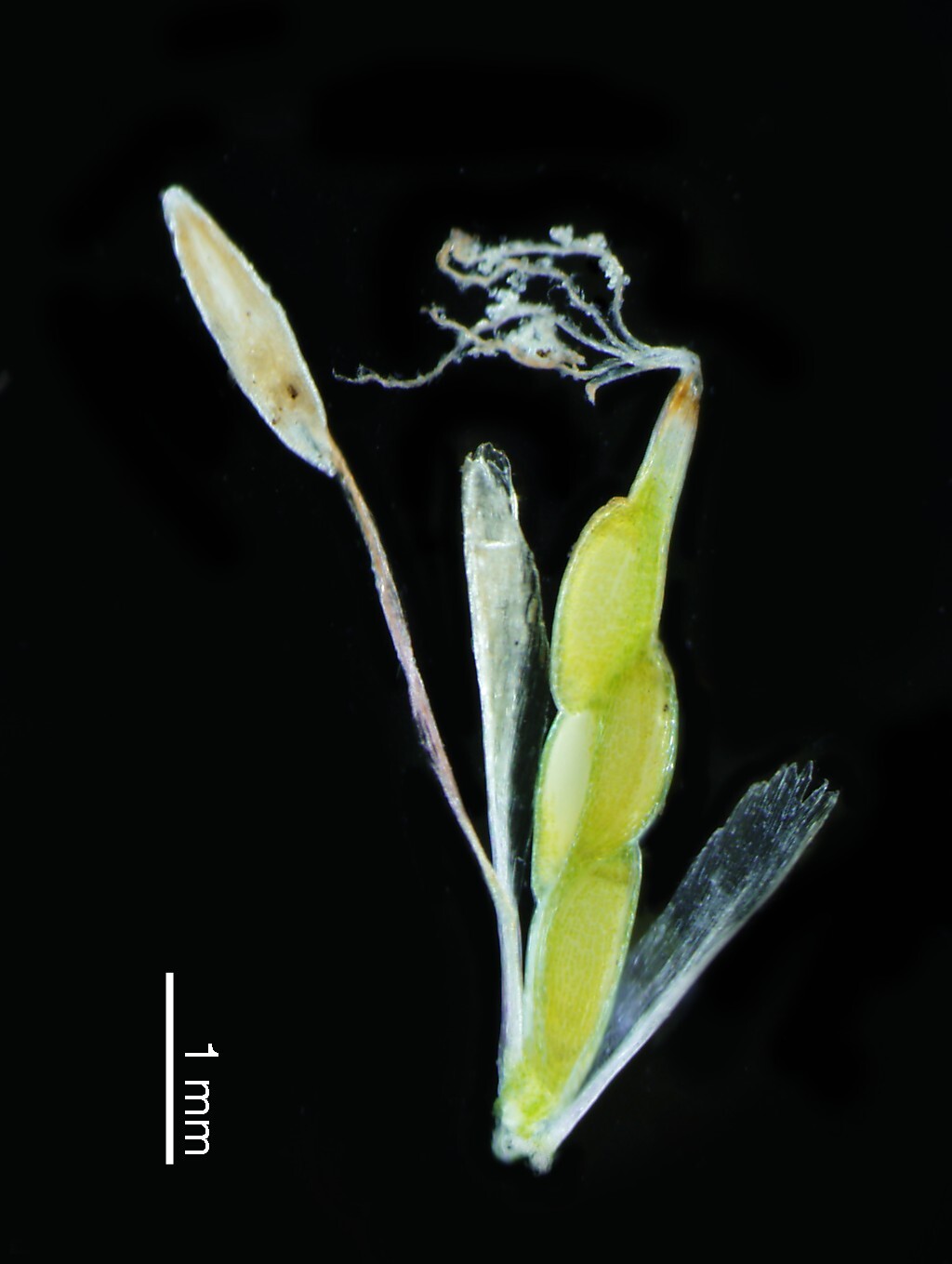Centrolepis aristata
(R.Br.) Roem. & Schult. Pointed CentrolepisLeaves (5–)10–25(–65) mm long, ± erect and straight, glabrous. Inflorescence borne on an axis 7–50(–100) mm long, hence flowers held above the leaves; bracts glabrous, sometimes with minute triangular trichomes on midrib. Lower bract with a broad, brown to mustard-coloured, papery basal sheath (2.5–)3–4 mm long, abruptly narrowed into a ± flattened, straight lamina (8–)10–45 mm long. Upper bract with a broad, brown to mustard-coloured, papery basal sheath (2.5–-)3–4 mm long, abruptly narrowed into a ± flattened, straight lamina 3–15(–22) mm long. Inflorescence units 6–22(–40) per head-like cluster. Stamens (absent or) 1 per inflorescence unit, fused at base to each axis bearing carpels. Carpels 3–7 in subopposite to alternate pairs; styles c. 1.5–2 mm long, fused together for up to half their length. Flowers Oct.–Dec.
LoM, MuM, Wim, GleP, Brid, VVP, VRiv, GipP, OtP, WaP, Gold, CVU, GGr, DunT, NIS, EGL, WPro, HSF, HNF, OtR, Strz, VAlp. All states except NT. In mallee areas, restricted to the Little Desert, otherwise rather common in damp soils, which may be shallow in rocky areas.
Conn, B.J. (1994). Centrolepidaceae. In: Walsh, N.G.; Entwisle, T.J., Flora of Victoria Vol. 2, Ferns and Allied Plants, Conifers and Monocotyledons, pp. 190–196. Inkata Press, Melbourne.
 Spinning
Spinning



